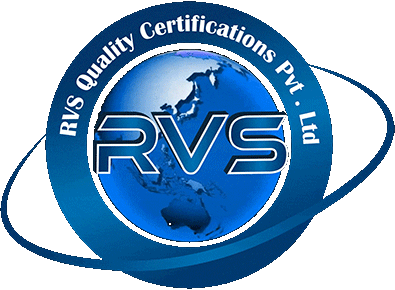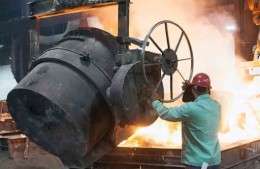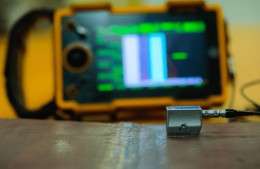I have been out of industrial activity after completing my graduation for about 2 years, then RVS Quality Certifications Pvt Ltd has changed my outlook on my career. Adopting a course in NDT has helped me launch my career.
What Are The Most Important Applications Of Phased Array Ultrasonic Testing
- By: Admin
wjmt.jpg)
With the fast-changing industrial age, safety, reliability, and efficiency are no longer a choice but a necessity. Sectors worldwide rely on diverse non-destructive testing (NDT) methods to maintain their machinery and infrastructure in perfect working condition. Phased Array Ultrasonic Testing is an excellent method that stands out from the rest due to its highly sophisticated application for flaw detection, thickness measurement, and material characterization. It helps inspectors see the inside of components without disassembling or destroying them. This piece discusses the most important uses of this technology in industries that require precision and performance.
Weld Inspection Across Industrial Sectors
Welding is the foundation of construction and production, particularly in industries such as oil and gas, aerospace, and nuclear energy. A minor flaw in a weld may result in disastrous failure if not addressed. Phased array systems allow for high-precision assessment of weld quality, frequently supplanting radiographic inspection in sensitive conditions. They enable the inspectors to analyze the full volume of weld by guiding the sound beam in various directions, showing internal defects such as slag inclusions, lack of fusion or cracks—defects that may otherwise go unnoticed until failure.
Corrosion Mapping in Aging Infrastructure
Infrastructure throughout industries tends to undergo environmental stress and aging, causing corrosion over time. Pipes, tanks, boilers, and pressure vessels are most susceptible. Phased array technology is extensively applied for corrosion mapping, and it facilitates the identification of wall thinning and pitting. With its capability for scanning broad surface areas and generating high-resolution images, it aids in maintenance planning and assists companies in making strategic decisions regarding repairs and replacements, prolonging asset life while not compromising safety standards.
Inspection of Aerospace Components
In the aerospace sector, parts are required to be exceptionally safe and of high quality. Most of these parts are composite materials, which are lightweight but difficult to inspect. Standard ultrasonic testing can be difficult with such materials, but phased array systems provide better penetration and definition. They are particularly good at discovering delaminations, disbonds and voids in composite layers, ensuring that aircraft structures are safe throughout their life cycle.
Power Plant Equipment Monitoring
The power generation industry is under high pressure and temperature. Turbines, steam lines, rotors and boilers are exposed to constant thermal and mechanical stresses, which cause them to develop internal defects over time. That's where phased array inspection comes in handy. Additionally, while some planned maintenance or condition-based maintenance is in place, there are many more applications immediately applied to fatigue cracks, corrosion and other failures long before these failures become catastrophic, reducing the cost of expensive downtime and improving operating reliability.
Upskilling with Phased Array and TOFD Training
The efficacy of any inspection technique is contingent upon the ability of the technician performing the activity. With the increasing need for sophisticated NDT technology, companies are investing in Phased Array and TOFD Training from RVS Quality Certifications Pvt. Ltd. to develop in-house capabilities. These courses include theoretical foundations, hands-on experience with equipment, and interpretation of defects, allowing technicians to conduct reliable inspections in actual cases. Trained inspectors will be able to detect vital defects and minimize false positives to improve overall inspection quality.
Safety in Rail and Motor Vehicle Components
Safety is not optional in the transport industry. In rail and car manufacturing, parts such as wheels, axles and suspension components need to be tested severely. Portable phased array systems allow technicians to conduct rapid and precise inspections in both production and maintenance environments. Doing this guarantees that parts under significant cyclic loads will not result in fatigue cracks or anomalies, keeping passengers and cargo safe in transportation.
Supplementing Methods with Infrared Thermography Services
Even though ultrasonic testing is designed for internal flaws, surface-level inspection can be facilitated with thermal scanning as well. Infrared Thermography Services are often used in conjunction with phased array testing to identify anomalies in surface temperatures, which can be suggestive of larger problems such as insulation failure, electrical issues and structural problems. For industries employing ultrasound as a method, these two services can provide a complete diagnostic view that can lead to better asset performance and maintenance.
Seeing Beyond the Surface: The True Value of Advanced Testing
Where equipment breakdown is not an option, proven methods of inspection become indispensable. Cutting-edge technologies such as phased array systems allow industries to be proactive in the area of safety and maintenance. By exposing what lies beneath the surface, it prevents accidents from happening, minimizes downtime, and maximizes the life span of critical assets. In a fast-paced world where more is expected, intelligent inspection is not a choice but a requirement.
RVS is the absolute best value to learn Aerospace NDT Training Course to nurture my skills. I am completely satisfied with how affordable the service they provide. Thanks RVS Team for constant support.
I would like to thank RVS for their time and patience in helping me learn and grow with my NDT courses. I was able to work and learn at the same time, with no pressure. I would recommend RVS to anyone seeking to work and take courses at the same time. I accomplished the course and today I'm a Certified PCN Level II UT engineer.
RVS helped our new hires to acquire the comprehensive training they need, as well as for refresher courses for our current employees. This has worked well for us in obtaining the necessary NDT certifications.
Just a few lines to express my gratitude for your outstanding service over the past year. We would have no issue in referring to your organisation because of your customer devotion and professionalism.
NDT is employed in a wide range of industries, including oil and gas, aerospace, energy, power, nuclear, and transportation, with nearly endless career opportunities. A job in NDT is extremely dynamic, and ongoing training is required.
One of the advantages of a four-year NDT programme is that students can study in a more focused and instructive manner. For graduates, this offers up a plethora of new NDT employment options, including quality assurance, management, engineering design, research, NDT training, and teaching.
Non-Destructive Testing (NDT) Training Courses - Levels 1, 2 and 3.
The PCN (Personnel Certification in Non-Destructive Testing) is a programme that meets the BS EN ISO 9712 requirements for NDT technicians and supervisors. It is founded in the United Kingdom, but it has an impact on a number of countries in the European Union.


-is-the-best-career-optioneE6f.jpg)





